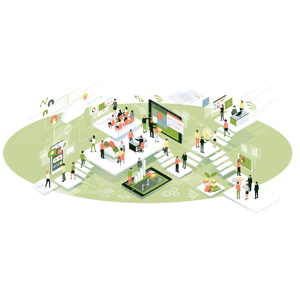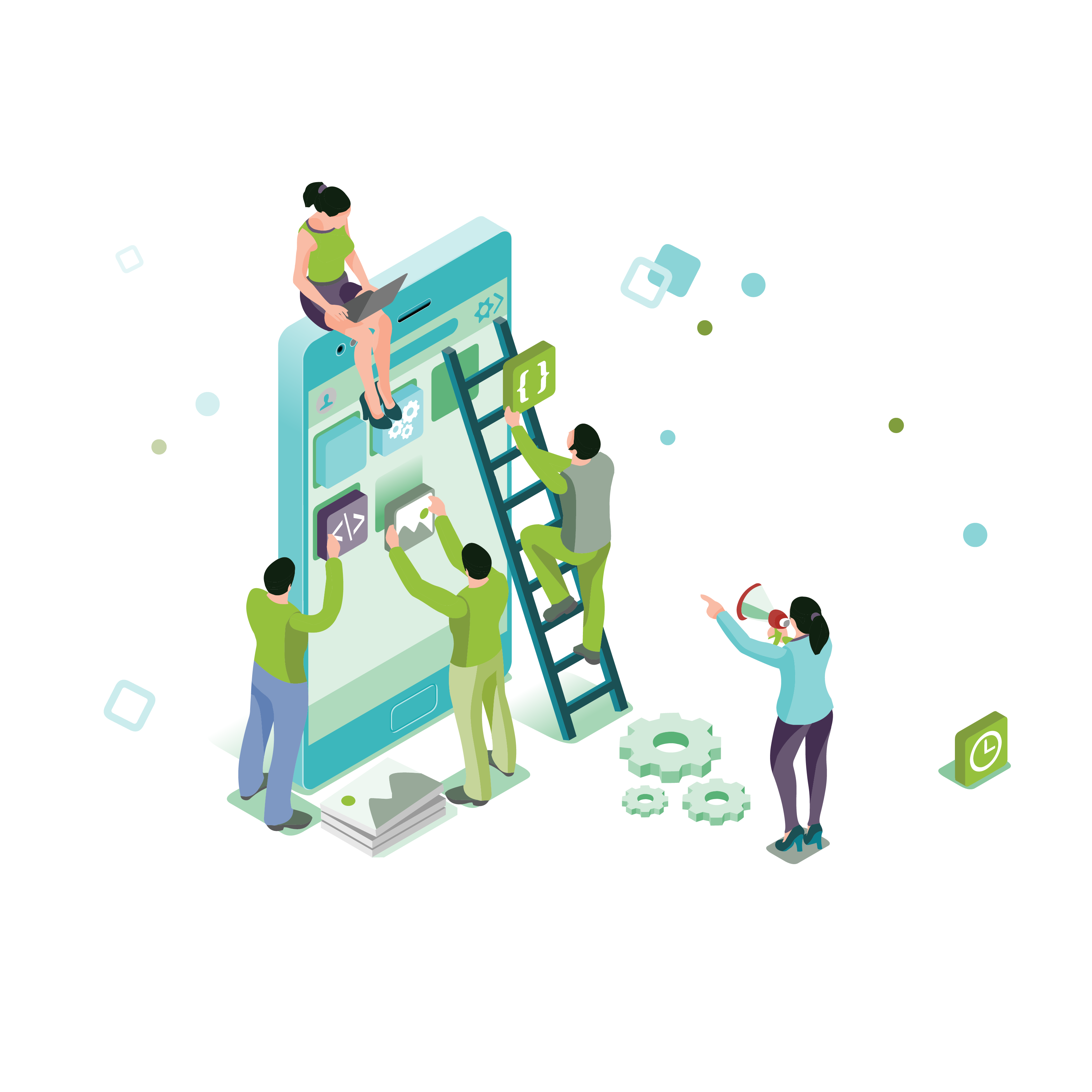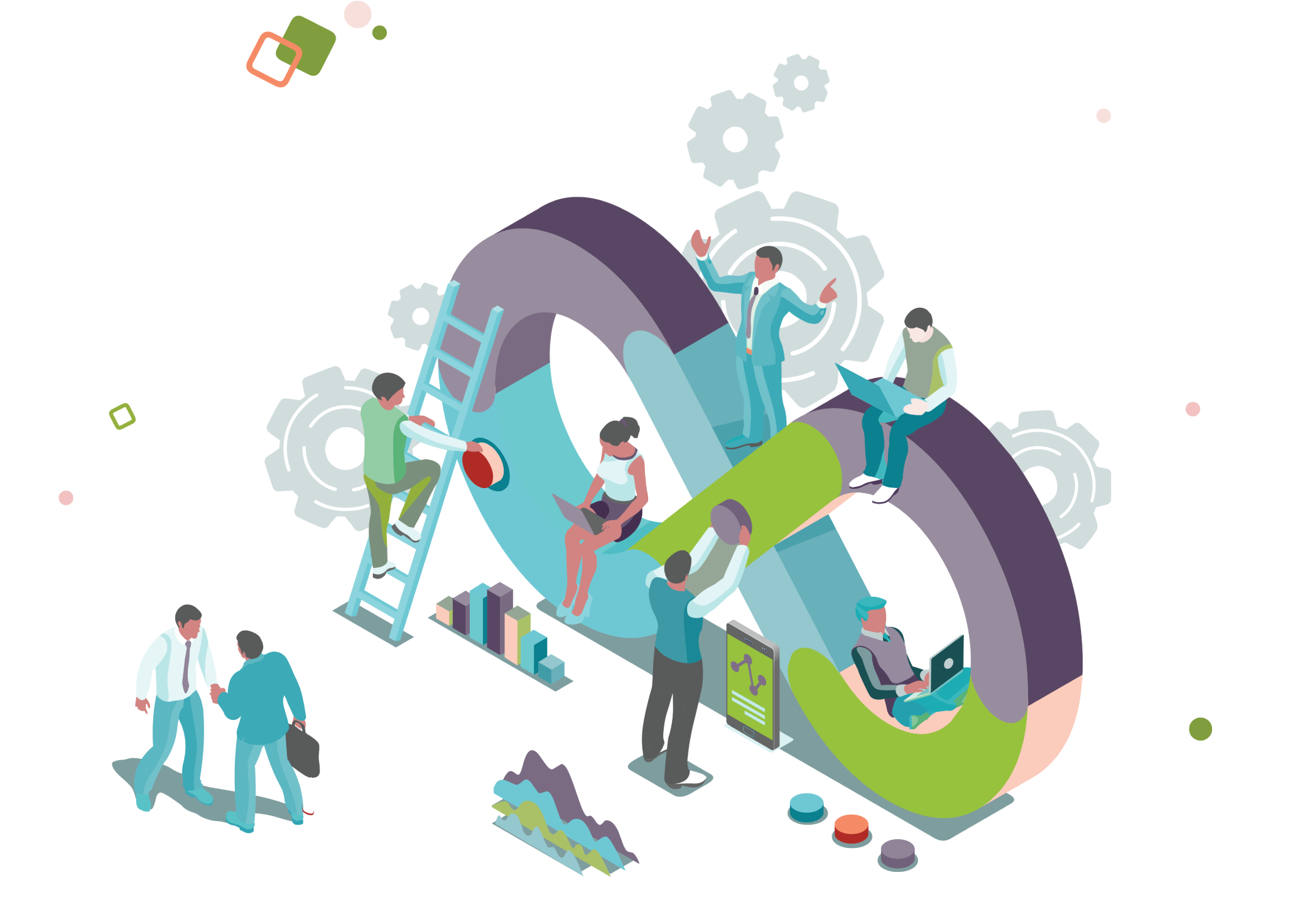Adaptive IoT platform at the core of enterprises

- IOT
- MACHINE LEARNING
- SCALABILITY
- CLOUD
- CLOUD COMPUTING
Most of us think of startups or research projects when hearing the buzzwords of machine learning or the internet of things. However, we already use them every day without even noticing it.
So why not use them for making enterprise applications more efficient? More and more studies show that IoT (Internet of Things) technologies are worth adapting as the potential applications in this area are constantly expanding at an outstanding pace.

The IoT has gradually gone from being a favorite topic in futurology to becoming an integral part of everyday life for end-users using smart devices that can be deployed to reduce the number of tasks they have to perform. Smart devices can be remotely controlled or they help people in their daily lives with built-in pre-programmed modules. By enabling the platforms behind smart devices to process ever faster and more data, operational/maintenance costs can be reduced, efficiency can be increased and companies get lots of valuable data that support their decision-making processes. Companies now not only get an assumption about what is going on, but with enabled data processing from remote sensors they now get an accurate picture of what actually is happening on their sites, to their critical devices, or even at their users'. This justifies the popularity of IoT technology, so much so that the IoT market, including hardware, software, systems integration, data and telecommunication services, is expected to grow to $520 billion by 2021. (source: Unlocking Opportunities in the Internet of Things)
The technical knowledge of IoT devices and the associated network, the cost of development, the provision of the associated back-end systems, the development and operation of the target application layers based on back-end systems, are very complex and require expertise that only a few companies worldwide can provide. Therefore most companies prefer to choose an expensive network used by larger Telco companies and the IoT-specific cloud infrastructure of a leading Cloud Computing Vendor, thus avoiding the time and cost of learning and adapting the technology.
However, as good as these cloud services are, their data is stored on remote servers so compliance with legal obligations, including the recent focus on GDPR, cannot be guaranteed in the private and public sectors. An additional risk is that any connected device is a potential attack and increases the vulnerability of the system. It is also important to highlight that the internal security standards of financial institutions and companies providing strategic infrastructure are often stricter than the legal requirements. This is mainly derived from the difficulty of IT security certification of 4T and other sensitive data. The other major problem with the IoT systems available on the market is that they are highly specific to a particular use case, such as smart homes, healthcare, industrial or agricultural applications. An IoT service that logs failure reports from coffee machines cannot be used in agricultural devices. They are a kind of specific software or, in the case of a platform, they require considerable basic development and IoT-specific experience. A further problem is that the majority of these systems do not have any intelligent machine learning algorithms - they are not self-learning, as the latter is a separate discipline in its own right. Costs that are inherently difficult to plan for are therefore ultimately uncertain and become an unmanageable risk.
To be able to host the system, regardless of the customer needs and the infrastructure available, either in a cloud service provider or on-premises, a technology is needed that can provide a single, self-viable system in both environments. The Docker-based containerization solution is standard today for creating environment independence, and while it is forward-thinking, the infrastructure between container instances is still on-premises, and IoT often requires extreme scalability. A solution is therefore needed that ensures portability, both in terms of hosted services and infrastructure. Kubernetes container-based application management software addresses these problems by essentially providing a so-called "private cloud" for any business with containerization and interconnected infrastructure that is ideal for a microservices architecture - not least with excellent scalability.
A further concern is the wide spectrum of vendors covering the IoT world and their individual solutions, that need to be managed both at the level of data management and connectivity. In addition to flexible device management, a database management system is needed that can store data, even with changing schema, in a uniform and easily accessible way. Traditional relational databases were out of the question given the schema constraints. A NoSQL-based solution is needed to overcome this problem. This technology provides the ability to handle variable schema data, at the same time it can be significantly faster than a traditional relational counterpart for simpler queries. Furthermore, due to the mass of data and the need for fast transmission, stream processing, which is an event-based architecture, needs to be implemented with dedicated data handlers.
A uniform solution to the connectivity problem is more difficult to find. There are many vendors, many devices and protocols, and many different versions of each. It is impossible to develop and maintain these interfaces individually, so the problem should be abstracted. Most of the IoT protocols used by vendors (e.g. ZigBee, Z-Wave, Cat-M, Bluetooth) are located below the IP layer within the TCP/IP network layers. If connectivity is approached from the IP layer the problem is narrowed down to a few message queues, e.g. MQTT, AMQP, and traditional REST interfaces. This can be exploited to build a broad-spectrum but maintainable interface to devices at the system level, and the different lower layer protocols can be abstracted using a hardware or software gateway.
Grape Solutions Plc. has always stood for innovation with its unique software solutions. At Grape, we provide innovative solutions to versatile business needs, therefore we recently have started to develop an IoT platform product/service that can not only run in the cloud but can also be deployed in the customer's own environment (on-prem). This platform is not device-specific as most of the other known IoT systems but is designed to be capable of instant integration of any type of smart devices and also it allows to connect large numbers of smart devices, thus ensuring high availability. The platform provides high scalability. Companies using the service can tailor the availability of the system to their specific needs.
The continuous evolution of the technology enables the long-term development of the platform, which not only gives a great opportunity for exploring machine learning methods but an automatic data recognition can also be fitted to any data stream. The goal is to create a single, generic IT platform that serves as an extension of the customer's IT system with comprehensive built-in functionality and a core machine learning service that would only be available through expensive in-house development.
About Grape Solutions
Comprehensive technology developments, digitization, business intelligence and testing services.

150+ Professionals
100+ Unique business applications developed
91% Returning customers

Find more information about the Grape IoT Platform available here.
Share this post on social media:
Posts by Tag
- IoT (17)
- Smart cities (16)
- E-mobility (14)
- Energy Management (10)
- Mobility (9)
- Software development (9)
- Marketing automation (6)
- RPA (6)
- Robotic Process Automation (6)
- electric vehicles (6)
- Internet of Things (5)
- IoT solution (5)
- Marketing software (5)
- Smart Building (5)
- Business Intelligence (4)
- Custom applications (4)
- IoT platform (4)
- Uipath (4)
- electric charging (4)
- IoT devices (3)
- Properties (3)
- AI (2)
- BI (2)
- Montu (2)
- Multi-device functionality (2)
- Omnichannel (2)
- RPA Budapest (2)
- Smart city (2)
- UX design (2)
- app development (2)
- artificial intelligence (2)
- crm (2)
- crm software (2)
- electric charging station (2)
- machine learning (2)
- marketing campaign (2)
- optima (2)
- API Testing (1)
- Agriculture (1)
- Automated Testing (1)
- BYOD (1)
- EV (1)
- Energy Communities (1)
- Event insights (1)
- Event report (1)
- Green IoT (1)
- HR (1)
- IT Outsourcing (1)
- ML (1)
- Power BI (1)
- Resource Management (1)
- Smart Home (1)
- Smart Office (1)
- TaaS (1)
- UX/UI Design (1)
- Xamarin (1)
- cloud (1)
- cloud computing (1)
- cross-selling (1)
- data driven marketing (1)
- digital twin (1)
- dynamic customer segmentation (1)
- esg (1)
- inbound marketing (1)
- industry 4.0 (1)
- onprem (1)
- onpremise (1)
- scalability (1)
- software robot (1)
- testing as a service (1)
- upselling (1)
Recent Posts
Read On

- SOFTWARE DEVELOPMENT
- BYOD
- MULTI-DEVICE FUNCTIONALITY
- CUSTOM APPLICATIONS
- MOBILITY
- UX DESIGN
Latest trends in custom software development
With the rapid development of cloud computing, the time has come when enterprise software development processes will face and effectively go through a massive transformation.

- IOT
- IOT SOLUTION
- IOT DEVICES
- IOT PLATFORM
What is an IoT platform, and how to choose the proper one?
Billions of IoT devices are actively used globally, and it is set to reach 30 billion by the end of 2030.According to a recent report, the global IoT market size is set to grow $272.4 billion by 2026, due to the rapid cellular network developments. In 2020, the highest number of IoT devices is...

- MOBILITY
- IOT
- INTERNET OF THINGS
- E-MOBILITY
- ELECTRIC VEHICLES
- IOT SOLUTION
- APP DEVELOPMENT
- IOT DEVICES
5G opens new opportunities to IoT app developers – 5G impacts on IoT
The Internet of Things (IoT) is developing rapidly and 5G supports this ambition even more. The progress of cellular and Wi-fi networks were limiting factors in IoT until 4G and now, 5G networks set to solve these problems. According to recent research, the global 5G IoT market size is set to grow...



